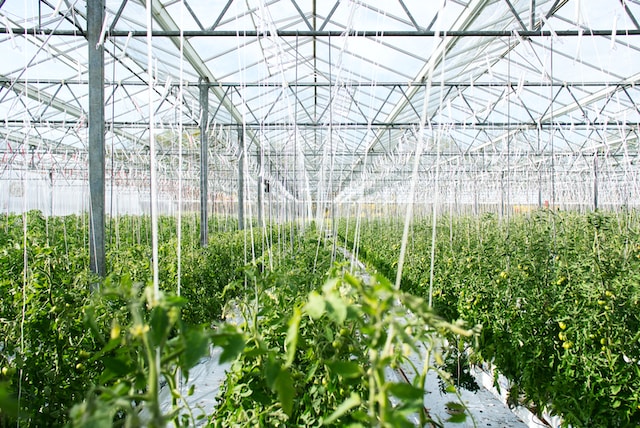The decreasing farming population and the trend of families selling their farms and ranches, along with the decline of commercial large-scale growers, pose significant concerns for future food production. These trends can have dire consequences, potentially leading to alarming levels of food shortage that are unprecedented albeit they can be solved through planning like the use of commercial greenhouse structures.
The reasons behind this decline in farming are multifaceted. Economic challenges play a major role, with factors such as rising operational costs, limited access to capital, fluctuating market prices, and trade uncertainties affecting farmers’ profitability. Additionally, the aging farming population and the lack of interest among younger generations to pursue agriculture as a career further contributes to this decline.
As farms and ranches are sold or abandoned, valuable agricultural land is lost or repurposed for non-agricultural purposes, reducing the overall capacity for food production. The decline of commercial large-scale growers also means a reduction in the efficiency and scale of agricultural operations, impacting economies of scale and potentially leading to increased food prices.
To address these challenges, it is crucial to implement supportive policies and initiatives that promote and incentivize farming. This can include providing financial assistance, access to affordable credit, and training programs for aspiring farmers. Encouraging sustainable and diversified farming practices, supporting local food systems, and fostering innovation in agriculture are also vital to mitigate the potential food shortage crisis.
Greenhouses: The Food Bowl of The World
Greenhouses have the potential to address several challenges associated with sustainable farming and contribute to feeding the world population. Here are some ways in which greenhouses can play a significant role:
- Increased Food Production
Greenhouses provide a controlled environment that allows year-round cultivation, irrespective of external conditions. This extends growing seasons and enables the production of high-quality crops in regions with unfavorable climates or limited arable land. With proper management, greenhouses can significantly increase food production.
- Resource Efficiency
Greenhouses offer better control over water usage, reducing water waste through targeted irrigation systems. They also minimize nutrient runoff and pesticide use, leading to more efficient resource utilization. Additionally, advancements in greenhouse technologies, such as hydroponics and vertical farming, allow for optimal space utilization and higher crop yields per unit area.
- Reduced Environmental Impact
By providing a shield against pests, diseases, and extreme weather events, greenhouses reduce the reliance on chemical pesticides and herbicides. This helps protect the environment, preserve biodiversity, and maintain soil health. Furthermore, with sustainable practices like using renewable energy sources and implementing energy-efficient technologies, the carbon footprint associated with greenhouse farming can be minimized.
- Local and Sustainable Food Systems
Greenhouses enable local food production, allowing communities to become more self-sufficient and less dependent on long-distance transportation of produce. This reduces food miles, energy consumption, and carbon emissions associated with transportation.
Types of Greenhouses
Each type of greenhouse serves specific purposes and caters to different needs and budgets. Understanding their utility and importance allows growers to select the most suitable option based on their requirements, available space, and desired level of sophistication.
Traditional Glass Greenhouse
The traditional glass greenhouse is a classic design with transparent glass panels. It offers excellent light transmission, creating an ideal environment for plants to thrive. Glass greenhouses are often used for commercial production, providing ample space for growing a wide range of crops.
Polycarbonate Greenhouse
Polycarbonate greenhouses use polycarbonate panels instead of glass. These panels are lightweight, durable, and offer good insulation properties. Polycarbonate greenhouses are popular among small-scale growers and backyard gardeners due to their affordability, ease of installation, and ability to regulate temperature effectively.
High Tunnel Greenhouse
High tunnel greenhouses, also known as hoop houses, are low-cost structures with curved or semicircular frames covered in polyethylene or polyvinyl plastic film. They protect from harsh weather conditions while allowing for good air circulation. High tunnels are versatile and suitable for extending growing seasons, protecting crops, and nurturing young plants.
A cold-frame greenhouse is a simple and compact structure with a transparent lid that can be opened or closed. It is typically built close to the ground and relies on solar heat to maintain a warmer environment for plants. Cold frames are often used for seed starting, hardening off plants, and growing cool-season crops.
Lean-to Greenhouse
A lean-to greenhouse is attached to an existing structure, such as a house or a wall. This type of greenhouse maximizes space utilization and takes advantage of the thermal benefits provided by the attached building. Lean-to greenhouses are suitable for urban settings or areas with limited space.
Aquaponic Greenhouse
Aquaponic greenhouses combine hydroponics (growing plants in water) with aquaculture (raising fish). The nutrient-rich water from the fish tanks is circulated to provide nutrients to the plants, while the plants filter the water, creating a symbiotic relationship. Aquaponic greenhouses offer a sustainable approach to food production by utilizing both fish and plant cultivation.
Shade House Greenhouse
Shade house greenhouses have shade cloth or netting covering the structure, reducing the amount of sunlight reaching the plants. They are commonly used in regions with intense sunlight or for growing shade-loving plants. Shade houses allow for better temperature control and protection against excessive heat and UV radiation.
Multi-Span Greenhouse
Multi-span greenhouses are large-scale structures composed of multiple interconnected bays or sections. These greenhouses offer significant cultivation space for commercial growers and allow for efficient use of resources and equipment. Multi-span greenhouses are suitable for large-scale crop production and can be customized to incorporate advanced climate control systems.
Conclusion:
Greenhouses indeed offer a sustainable form of growing food that can be established anywhere, including high-rise terraces. Their controlled environment allows for year-round cultivation, efficient resource utilization, and reduced reliance on pesticides. This makes them a viable option for urban farmers seeking sustainable food production in limited spaces. With social media and awareness of eating right, people prefer farm-to-fork concepts and expect fresh produce against processed packages that consist of preservatives that do not suit everyone’s gut and are interested in eating the nutritious way.







